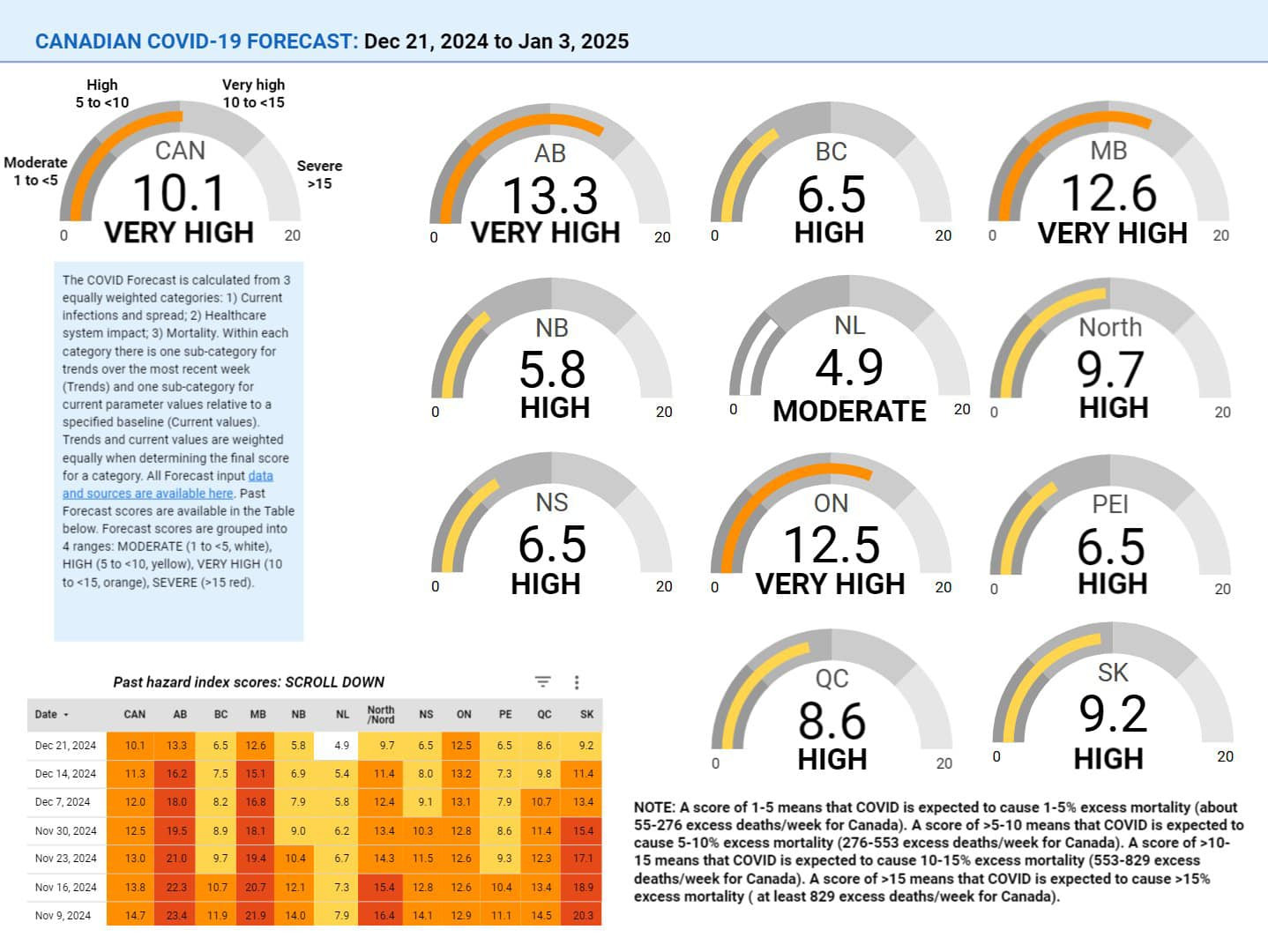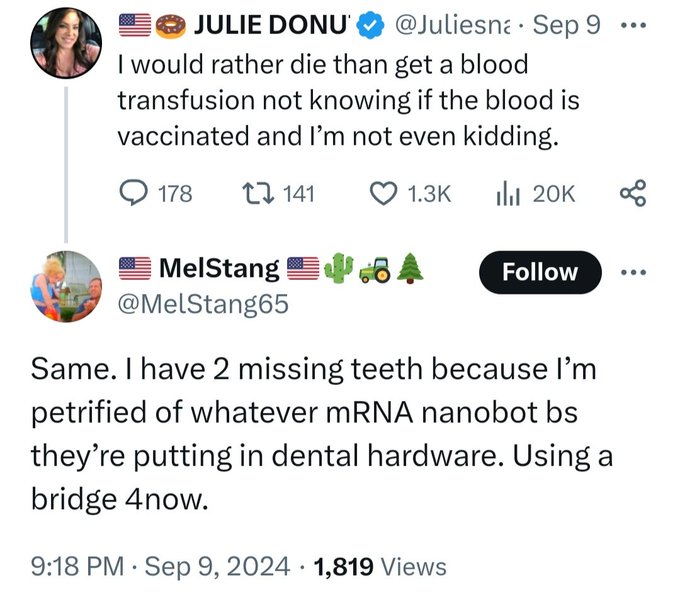Beyond mix - islander - Jul 10, 2025 - 8:17am
NYTimes Connections - geoff_morphini - Jul 10, 2025 - 7:47am
Wordle - daily game - geoff_morphini - Jul 10, 2025 - 7:36am
NY Times Strands - Proclivities - Jul 10, 2025 - 7:02am
Trump - Red_Dragon - Jul 10, 2025 - 6:34am
Radio Paradise Comments - GeneP59 - Jul 10, 2025 - 6:32am
misheard lyrics - GeneP59 - Jul 10, 2025 - 6:30am
Bug Reports & Feature Requests - q4Fry - Jul 10, 2025 - 6:25am
Today in History - Red_Dragon - Jul 10, 2025 - 6:17am
Democratic Party - NoEnzLefttoSplit - Jul 10, 2025 - 12:13am
Baseball, anyone? - geoff_morphini - Jul 9, 2025 - 7:23pm
Spambags on RP - Proclivities - Jul 9, 2025 - 6:13pm
TEXAS - Red_Dragon - Jul 9, 2025 - 5:57pm
July 2025 Photo Theme - Stone - Zep - Jul 9, 2025 - 5:43pm
Live Music - R_P - Jul 9, 2025 - 1:52pm
Name My Band - GeneP59 - Jul 9, 2025 - 1:16pm
Israel - R_P - Jul 9, 2025 - 1:04pm
DQ (as in 'Daily Quote') - black321 - Jul 9, 2025 - 11:33am
Fascism In America - ColdMiser - Jul 9, 2025 - 10:23am
Climate Change - R_P - Jul 9, 2025 - 8:06am
Republican Party - Red_Dragon - Jul 9, 2025 - 7:50am
Economix - oldviolin - Jul 9, 2025 - 7:45am
What the hell OV? - oldviolin - Jul 9, 2025 - 7:26am
• • • The Once-a-Day • • • - oldviolin - Jul 9, 2025 - 7:21am
Outstanding Covers - oldviolin - Jul 8, 2025 - 9:29pm
Trump Lies™ - R_P - Jul 8, 2025 - 7:14pm
Musky Mythology - R_P - Jul 8, 2025 - 5:43pm
Great Old Songs You Rarely Hear Anymore - KurtfromLaQuinta - Jul 8, 2025 - 4:57pm
USA! USA! USA! - R_P - Jul 8, 2025 - 2:40pm
Photography Forum - Your Own Photos - Alchemist - Jul 8, 2025 - 11:45am
What is the meaning of this? - islander - Jul 8, 2025 - 10:11am
Love & Hate - oldviolin - Jul 8, 2025 - 8:15am
Artificial Intelligence - Red_Dragon - Jul 8, 2025 - 6:45am
Anti-War - R_P - Jul 7, 2025 - 6:45pm
Environment - R_P - Jul 7, 2025 - 5:38pm
(Big) Media Watch - R_P - Jul 7, 2025 - 12:04pm
The Grateful Dead - black321 - Jul 7, 2025 - 11:17am
M.A.G.A. - Red_Dragon - Jul 7, 2025 - 9:26am
Music Videos - black321 - Jul 7, 2025 - 9:00am
Mixtape Culture Club - KurtfromLaQuinta - Jul 7, 2025 - 8:59am
Immigration - black321 - Jul 7, 2025 - 8:02am
Russia - Red_Dragon - Jul 7, 2025 - 7:39am
Triskele and The Grateful Dead - geoff_morphini - Jul 6, 2025 - 10:33pm
Hey Baby, It's The 4th O' July - GeneP59 - Jul 6, 2025 - 9:42pm
Customize a shirt with my favorite album - 2644364236 - Jul 6, 2025 - 7:20pm
Those Lovable Policemen - R_P - Jul 6, 2025 - 10:56am
Beer - SeriousLee - Jul 6, 2025 - 6:54am
Iran - R_P - Jul 5, 2025 - 9:01pm
What are you doing RIGHT NOW? - Coaxial - Jul 5, 2025 - 6:48pm
New vs Old RP App (Android) - mhamann123 - Jul 5, 2025 - 5:41am
Britain - R_P - Jul 4, 2025 - 1:41pm
Ukraine - R_P - Jul 4, 2025 - 11:10am
Best Song Comments. - 2644364236 - Jul 3, 2025 - 11:32pm
Country Up The Bumpkin - KurtfromLaQuinta - Jul 3, 2025 - 3:49pm
The Obituary Page - ScottFromWyoming - Jul 3, 2025 - 11:27am
Documentaries - Proclivities - Jul 3, 2025 - 9:31am
Annoying stuff. not things that piss you off, just annoyi... - Steely_D - Jul 3, 2025 - 8:36am
Copyright and theft - black321 - Jul 3, 2025 - 6:48am
Protest Songs - R_P - Jul 2, 2025 - 2:20pm
Fox Spews - islander - Jul 2, 2025 - 10:39am
New Music - ScottFromWyoming - Jul 2, 2025 - 7:30am
Carmen to Stones - KurtfromLaQuinta - Jul 1, 2025 - 7:44pm
President(s) Musk/Trump - VV - Jul 1, 2025 - 8:10am
June 2025 Photo Theme - Arches - Alchemist - Jun 30, 2025 - 9:10pm
Please help me find this song - LazyEmergency - Jun 30, 2025 - 8:42pm
Forum Posting Guidelines - rickylee123 - Jun 30, 2025 - 6:17pm
Thanks William! - buddy - Jun 30, 2025 - 5:49pm
Living in America - R_P - Jun 30, 2025 - 3:15pm
Gardeners Corner - marko86 - Jun 30, 2025 - 10:39am
Comics! - Red_Dragon - Jun 30, 2025 - 7:59am
Birthday wishes - Coaxial - Jun 30, 2025 - 6:36am
Talk Behind Their Backs Forum - VV - Jun 30, 2025 - 5:39am
Global Mix renaming - frazettaart - Jun 29, 2025 - 9:23am
What Are You Going To Do Today? - ScottFromWyoming - Jun 28, 2025 - 10:17am
Know your memes - oldviolin - Jun 27, 2025 - 11:41am
Index »
Radio Paradise/General »
General Discussion »
COVID-19
Page: 1 , 2 , 3 ... 396 , 397 , 398 Next
ScottFromWyoming
Posted:
May 29, 2025 - 1:16pm
The men's room here at work has a framed & laminated poster of handwashing instructions put out by the Georgia Department of Health. 5 years after it went up, someone (a customer) threw it in the trash. I'm actually shocked it lasted this long.
R_P
Posted:
Mar 24, 2025 - 11:14am
R_P
Posted:
Dec 29, 2024 - 11:04am
First They Got Long Covid. Then, It Made Them Homeless (2022-02-25)
It's estimated that millions of Americans have developed chronic illness as a result of Covid-19 infection. For some â especially those in the gig economy â it's made them unable to support themselves
R_P
Posted:
Dec 23, 2024 - 12:13pm
ScottFromWyoming
Posted:
Nov 8, 2024 - 1:11pm
R_P wrote:
I finally learned to get mine on a Monday or Tuesday so if I react to it, I don't waste a weekend.
Paid off too, because my Wednesday sucked but I was at work so nothing new there.
R_P
Posted:
Nov 8, 2024 - 12:54pm
Flu/Covid refresh.
R_P
Posted:
Sep 14, 2024 - 11:07am
R_P
Posted:
Sep 6, 2024 - 2:19pm
Steely_D wrote:
Finally we're starting to get some confirmation of the obvious: social media is our enemies' propaganda tool.
FYT .
Every accusation...
Steely_D
Posted:
Sep 6, 2024 - 1:01pm
Steely_D wrote:
Hard to know what this means. But Iâve said it many times that were already under attack using a disinformation campaign into our social media that has caused Americans to hate each other, mistrust science, willfully die from a preventable disease, and
express support for Russia instead of the President. Thatâs been many more people than those that died on September 11. Many many more, and we donât care because Trump told us it would magically be gone by spring, etc. Idiot.
Enemies just changed tactic now that we take our shoes off to fly. Attack our media and gain control of our nation.
Finally we're starting to get some confirmation of the obvious: social media is our enemies' propaganda tool.
sirdroseph
Posted:
Aug 16, 2024 - 5:38am
VIDEO
sirdroseph
Posted:
Aug 16, 2024 - 4:45am
VIDEO
sirdroseph
Posted:
Aug 14, 2024 - 6:14am
VIDEO
sirdroseph
Posted:
Jul 31, 2024 - 4:09am
VIDEO
Isabeau
Posted:
Jul 20, 2024 - 6:40am
Steely_D wrote:
Well then, just donât drink the waste water.
Steely_D
Posted:
Jul 19, 2024 - 6:35pm
Well then, just donât drink the waste water.
R_P
Posted:
Jul 19, 2024 - 5:26pm
oldviolin
Posted:
Jul 9, 2024 - 2:18pm
miamizsun wrote:
The drip is real...
thisbody
Posted:
Jul 9, 2024 - 12:53pm
kurtster wrote:
Aside from getting things wrong in the first place...
...governmental COVID measures critique remains unwanted.
kurtster
Posted:
Jul 9, 2024 - 12:49pm
Red_Dragon wrote: That should make you happy in a poetic justice kinda way, eh ?
Red_Dragon
Posted:
Jul 9, 2024 - 9:40am




